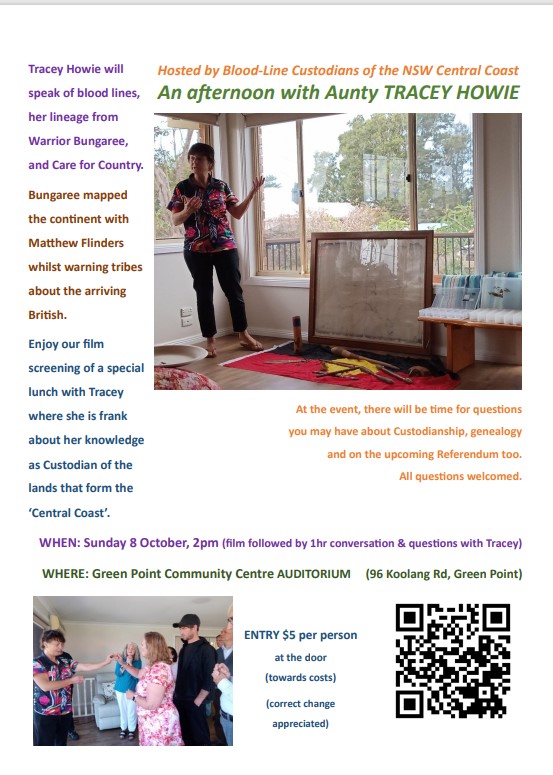Hearing the machinery causing devastation on the hills above my property causes me great distress, because I’ve seen it all before – Brian Davies tells a community meeting at Kincumber hosted by Community Voices Australia.
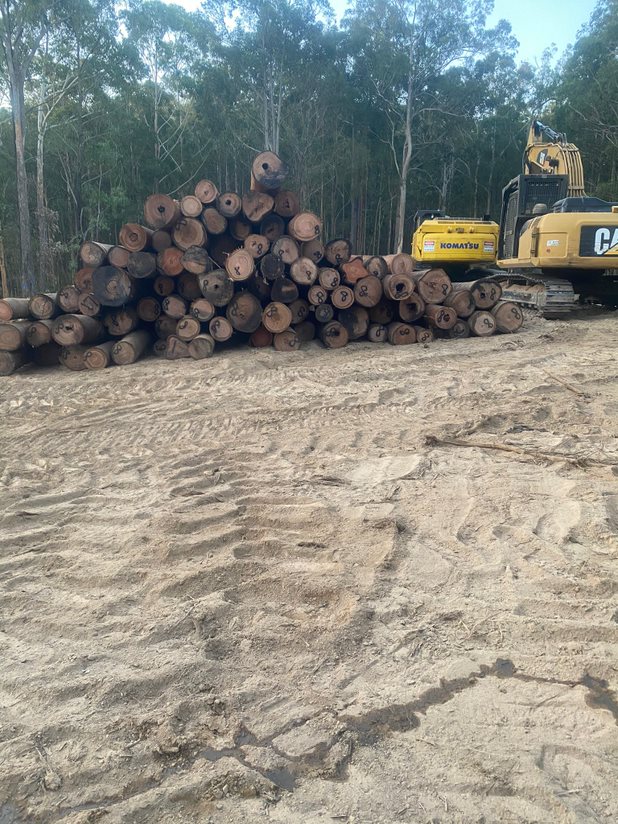
By Brian Davies
Logging took place behind my property along Toobys Creek in 2003. Prior to logging we used to walk along the banks of the creek on a regular basis as it was a beautiful rainforest walk.
We were appalled by what happened during logging. There are supposed to be rules to mitigate damage but no one seemed to check.
There were other problems besides destruction of habitat. Steep tracks were bulldozed up the hillsides acting as channels to wash soil down into the creeks. The roads along the creek banks were bulldozed and dirt pushed over the creek bank. Log dumps were built close to the creek and gullies that feed it.
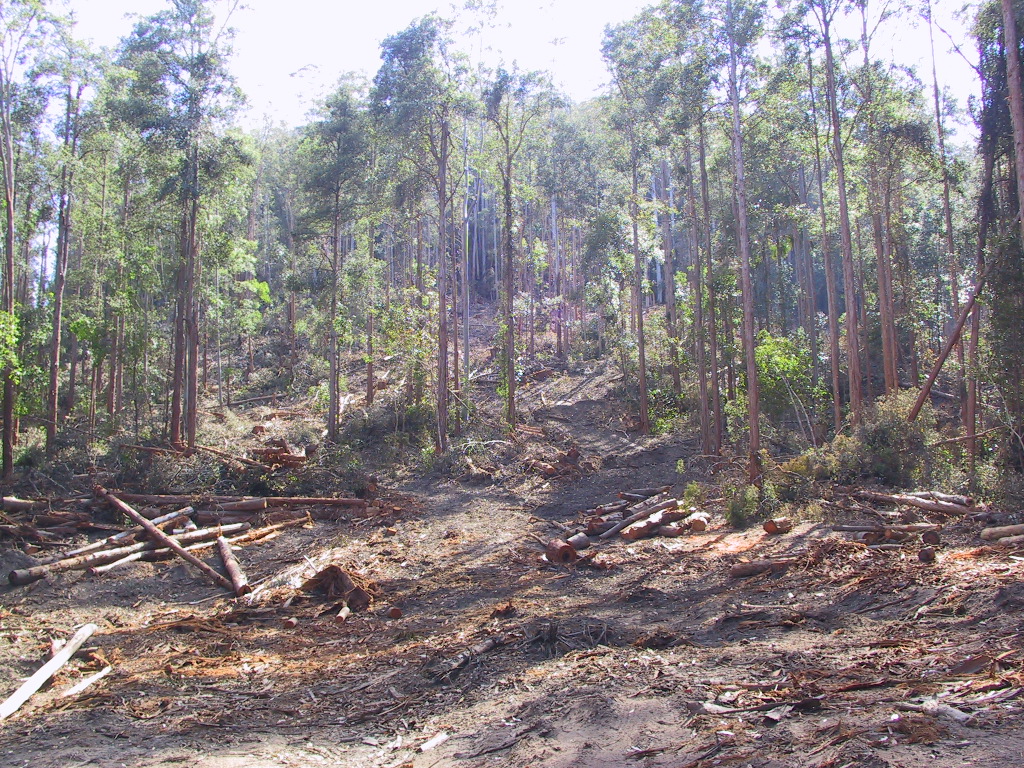
Rainforest areas along the creeks were damaged. Creek crossings were built that interrupted the flow of the creek.
The creek was changed permanently with the amount of sediment washed down from all the damage and has never fully recovered in the 20 years since.
I tried to raise the alarm at the time but no one in power took any notice.
So when I heard logging had resumed in OSF, I checked the latest research on native forest logging and it exceeded my worst fears.
It isn’t the wonderful, sustainable, environmentally friendly operation that Forestry claims it to be. They clearly have a conflict of interest trying to justify their own existence and the significant cost to taxpayers of funding the loss making native forest logging. All for product that is mostly of little value.
They are misleading parliamentarians as well as the general public and by that deceit are helping to send koalas and many other threatened species to extinction, as well as feeding climate change and directly increasing the risk and severity of bushfires. This is placing people’s lives at risk.
Forestry admit that the biggest primary threats to koalas are “loss, fragmentation and degradation of habitat”.
That pretty much describes the Forestry business model. But then they claim logging makes no difference to koala numbers. This has been comprehensively debunked.
They set up microphones and if they heard a male koala calling in the breeding season they said koala numbers hadn’t changed.
We need to examine the harm done by logging in light of science and facts, not outrageous unproven claims. The evidence against native forest logging is extensive and comprehensive. I like the quote ‘reality must take precedence over public relations because nature can’t be fooled’.
After an interview I gave on ABC radio and Forestry’s response, Deborah Tabart, CEO of the Australian Koala Foundation, stated: “I think our rapacious need for wood means that the bulldozers are just working full time and that there’s no understanding by any of our political leaders in my view. You just can’t keep logging until you’re told you can’t do it anymore. I sort of almost felt sorry for the Forestry spokesman. to be frank, defending the indefensible. It is time for us to start considering other alternatives for building and housing. . . . Our country hasn’t got any vision about alternative ways of doing business, but also not recognising the incredible impact that koalas have on our economy – $3 billion in tourism and about 30,000 jobs. That far outweighs the destruction of these forests. . . . a koala protection act would stop what’s happening in those forests right now”.
And it’s not just Australian scientists.
A group of 30 leading forest experts from around the world met in Coffs Harbour last week. They were stunned that large parts of the Great Koala Park were being logged, and the archaic way logging is done here.
They propose to write an article about the destruction for the British scientific journal Nature to expose to the world what’s happening here.
Bushfires are acknowledged by Forestry as the next main threat to koalas after habitat loss, but it’s also a major risk for all other species of animals and plants that live in the forests, and the people who live nearby.
An estimated 3 billion animals were killed in the black summer bushfires, many in state forests where the risk and severity of fires was increased by logging. By logging the forests that survived these fires they’re destroying vital surviving habitat, and setting them up for destruction by fire.
Areas like OSF that escaped the fires form arks that should have been safe havens for many species to recover and provide a basis to repopulate the huge swathes of devastated forests.
Instead, we see Forestry targeting and destroying these areas and wiping out the habitat that could have helped save these species.
The koala pictured appeared not far from the areas being logged in OSF in 2020. I know the person who took this photo.
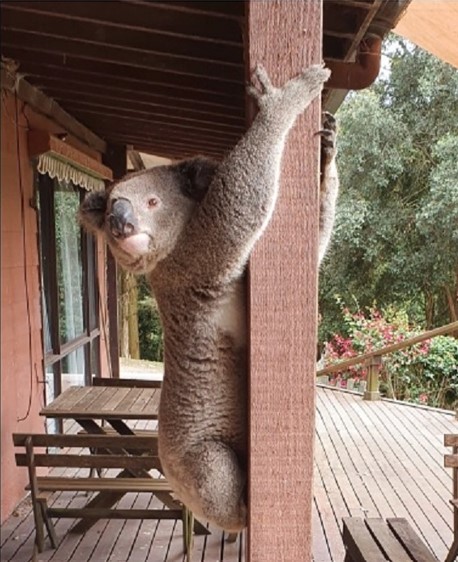
Locals believe it may have moved in from forests further west that were impacted by fire.
The primary risk for people like me who live near OSF is the amount of flammable debris left behind.
Given that we’re already into hot dry conditions, these will act like firebombs to ignite trees leading directly to houses along Palmdale Road and along east west ridgelines to Ourimbah.
This picture shows just some of the masses of flammable material.
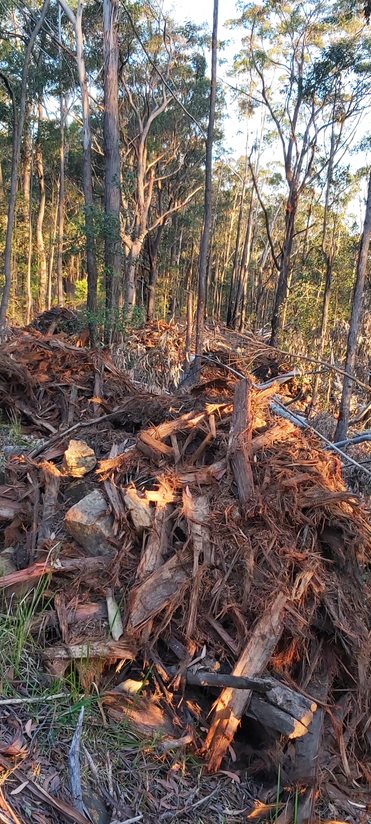
If, by some miracle, we dodge that firebomb, research shows that logged forests present a higher fire risk than unlogged areas for a period of 30 years and even 70 years after logging.
It states: “Logging of native forests makes them much more flammable and elevates the severity of bushfires when they occur, pushing some species closer to ecological collapse, according to . . . two leading universities.” (ANU and Griffith) “it is up to seven times more likely that the canopy in a logged forest will burn compared with an unlogged forest”, (Patrick Norman, an ecologist with the Griffith Climate Change Response Program, and one of the report’s authors).
Research also shows that logging contributed to the devastation from the catastrophic fires of 2019/20 stating:
(UQ Professor James Watson said) “Logging causes a rise in fuel loads, increases potential drying of wet forests and causes a decrease in forest height… It can leave up to 450 tonnes of combustible fuel per hectare close to the ground – by any measure, that’s an incredibly dangerous level of combustible material in seasonally dry landscapes.
“By allowing these practices to increase fire severity and flammability, we undermine the safety of some of our rural communities. See Palmdale on the map. Note the number of streams feeding down into the valley. Sediment washes into these streams and into our creeks.
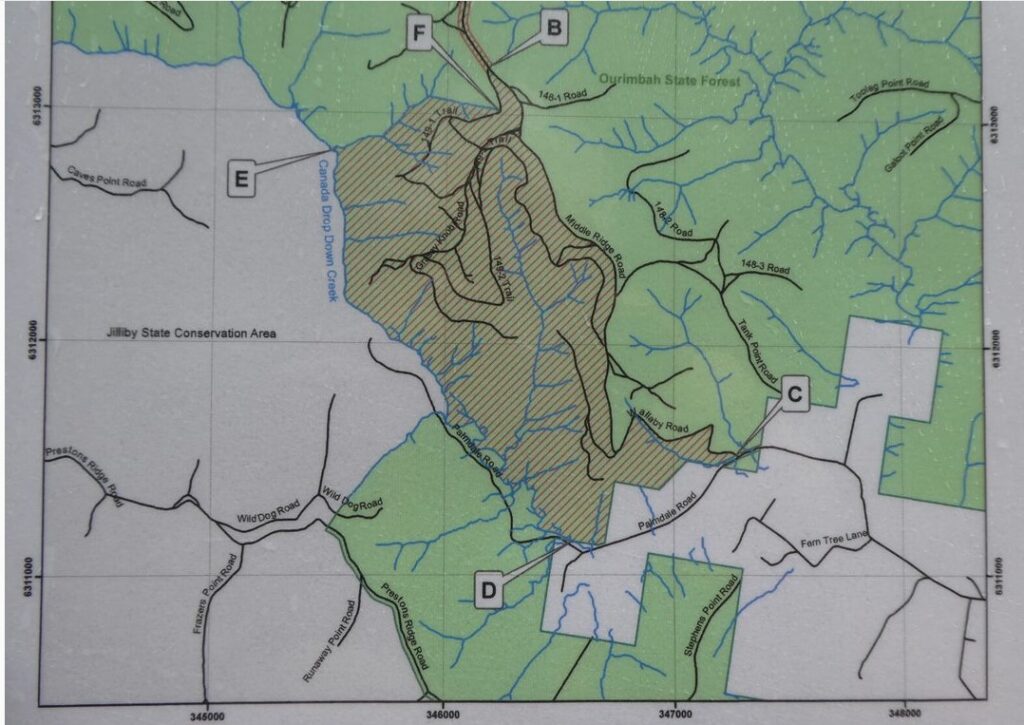
“It affects wildlife too by creating habitat loss, fragmentation and disturbance for many species, with major negative effects on forest wildlife.”
(Lead author, Australian National University’s) ANU Professor David Lindenmayer, said) there are land management actions we can take to stop these fires from occurring in the future. “The first is to prevent logging of moist forests, particularly those close to urban areas.“
Climate change and bushfires are closely linked.
Every tree cut down no longer contributes to absorbing CO2.
Deforestation is a major contributor to catastrophic climate change.
It will take 30 to 40 years to replace the relatively small trees being logged now, assuming that the whole forest doesn’t go up in a climate induced bushfire in that time frame. Every harvest of mature trees is contributing to the current dire state of the climate, as have the vast areas of forest that were burned in the Black Summer fires.
The Guardian reports: In Australia, the destruction of vegetation for cattle pasture is the most significant driver of forest loss and degradation, but the continued logging of native forests is named as an “important secondary cause”. “every other developed country in the world has stopped doing that,”. Forest destruction is a threat to more than 700 endangered Australian plants and animals.
ANU[1] reports “Leading researchers are calling for a cease to native forest logging if Australia wants to meet its net zero targets in coming decades. The researchers, from ANU and Griffith, say only native forests can remove carbon from the atmosphere at the rapid rate required.”
By contrast with Forestry’s disdain for ecosystems and climate, the U.S. Forest Service intends to plant more than a billion trees by 2030 to shade and cool cities, protect water and fight climate change[2].
There is massive disturbance of topsoil with current logging practices.
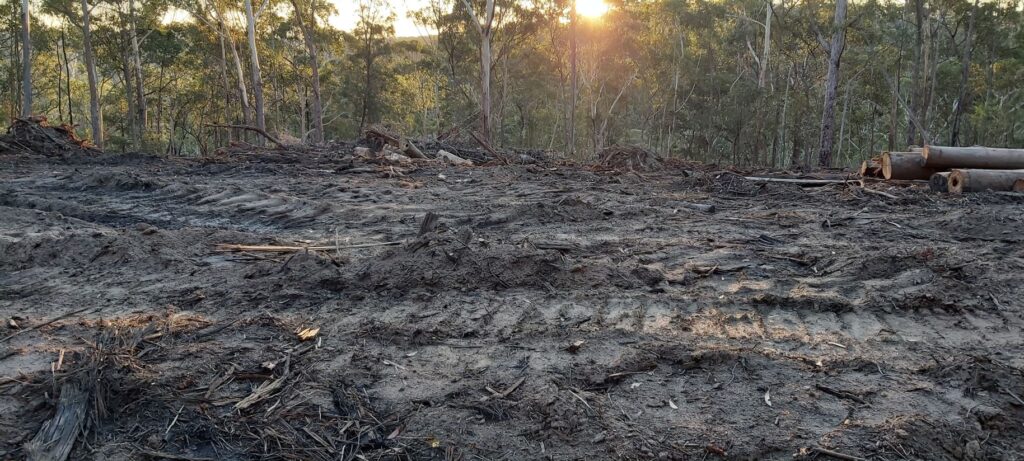
When it rains the many streams on the map that I mentioned earlier carry silt runoff from the disturbed areas throughout the catchment.
They feed into Canada Drop Down Creek, that in turn feeds into Ourimbah Creek, and then Tuggerah Lakes.
This has a devastating impact on aquatic animal and plant species downstream. And loss of topsoil reduces fertility and the ability to regrow trees in logged areas.
Habitat loss doesn’t just impact koalas. The devastation caused by logging impacts all species of birds, animals and plants in the area, and humans too. Not just habitat loss but also siltation, contribution to climate change, bushfires and flooding.
The greater glider has been listed as endangered as a result of bushfires, logging and climate change. Despite Forestry’s claims of protecting these endangered animals, we’ve seen them caught red handed when EPA put a stop to logging in Tallaganda State Forest. A greater glider was found dead near logging operations in one of the last strongholds for this species[3].
OSF is a refuge for many species that were decimated by bushfires in other forests. Logging is further placing those species at risk. Palmdale locals saw lyrebirds and brush turkeys fleeing the forest into inhabited areas.
I saw a displaced white-bellied sea eagle for several days at my property in Palmdale after its roosting or nesting tree was cut down. It wasn’t comfortable, I’d say it was like a fish out of water.
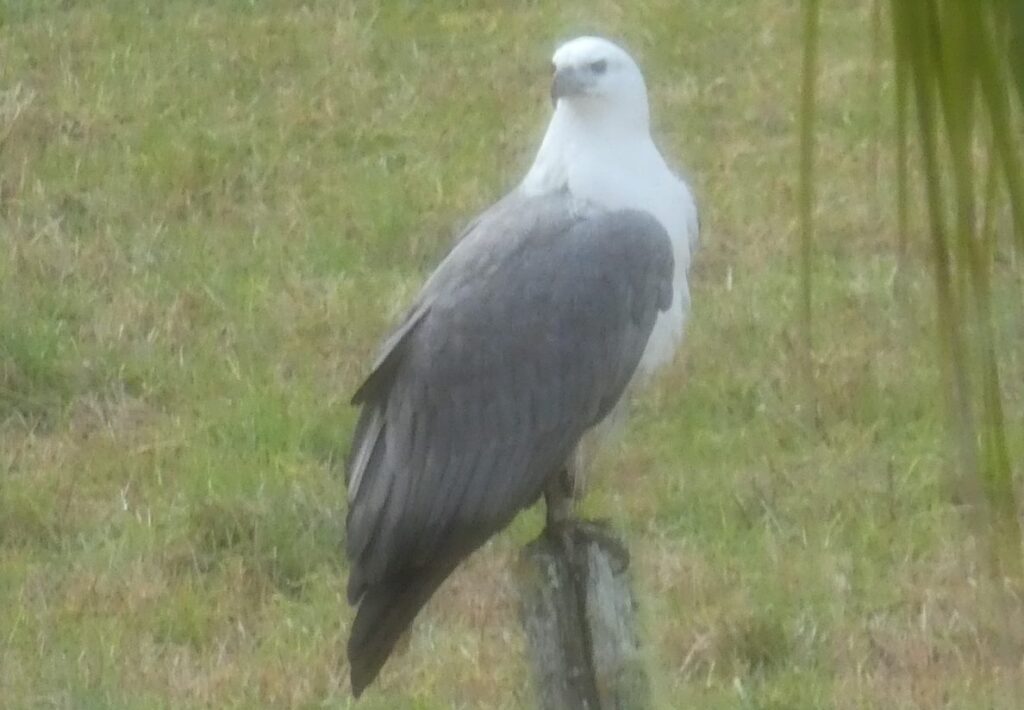
It moved on, but a pair has now appeared in a large tree on a nearby property. The owners hadn’t seen any in the 30 years they’ve lived there.
These are the species that are easy to see, so there are likely to be many smaller animals and birds affected too. Other endangered species in the mapped logged areas include the stuttering frog and microbats, with increased numbers of microbats seen outside the forest.
The resulting poor quality product doesn’t justify the devastation, loss of habitat and the significant burden to NSW taxpayers to fund these operations[4].
Greens MP Sue Higginson says the hardwood division conducts logging operations in public native forests and is directly driving the climate and extinction crises. ‘The people of NSW have lost another $9 million dollars to the unprofitable and irresponsible destruction of our native forests,’ that are ‘turned into low-value products such as wood chips for export, fence palings and pallets.
‘These forests are home to endangered koalas and greater gliders and must be preserved if we hope to save these species from extinction,’ ‘The softwood division by contrast earned $47 million from plantations that can be managed sustainably and go to building homes and other high value uses.’ The government is being dishonest to justify the ongoing logging in native forests.
Forestry have even ‘adjusted’ their figures. There are two versions of the OSF harvest plan.
Version 1 was strongly criticised for the amount of waste and low-grade product. So, in a modern day miracle reminiscent of the loaves and fishes, we see huge increases in the high-quality product out of the same trees.
Forestry claim that a long history of logging means forests are somehow not being degraded.
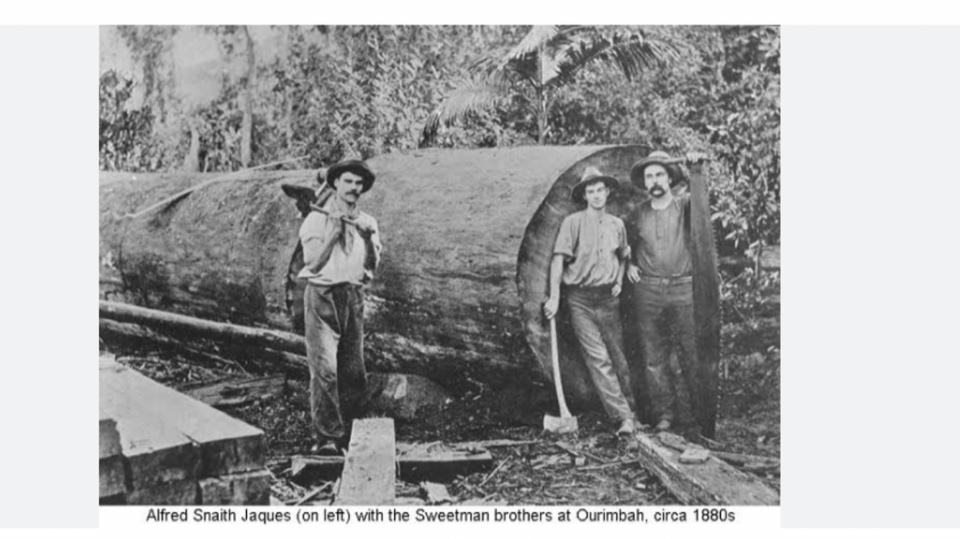
We’ve had long histories of other activities too, like burning coal, gas and oil, and killing koalas for their fur[5] – at least 9 million, with 6 to 8 hundred thousand in August 1927 alone. The killing was finally banned after a massive public backlash in Australia’s first large movement of citizens for conservation. The government was voted out.
We need to look critically at Forestry’s claims and establish how healthy the forest systems are now compared to their condition before logging started.
You could say that in part I owe my existence to logging.
When I was born my father, worked at Spry’s sawmill, as did 5 of our close neighbours, and a family friend. When I grew up in Ourimbah in the 50’s and 60’s, Ourimbah’s long history of logging and milling was welcomed. I went to school with children from some of the pioneering families associated with the timber industries.
We were pretty much free range children who roamed widely through the local forests using hollows in huge stumps as cubby houses. Old Mr Catt, who lived nearby, would tell us stories of the giant trees that used to grow there before it was logged.
But I, and we, know a lot more now than we did then. The machinery has moved on, but Forestry still seems to have 19th century attitudes.
Mechanised harvesting in the 21st century is a completely different proposition to early logging. Axes, cross cut saws and bullock teams don’t compare to machines that can cut down a tree every minute and strip it ready to go onto a massive truck.
If we look at the scrawny trees felled now compared to the centuries old forest giants of the 1800’s, it’s clear that our forests are very significantly degraded from that time.
And when we look at what’s left after logging there is very little suitable habitat for birds or mammals. No wonder populations are in decline.
In conclusion, I, and our other speakers, are revealing many reasons why native forest logging should cease. The current operations in OSF are almost complete so the damage has already been done for these compartments. But we need to stop any further destruction in other areas of the forest, and in forests statewide.
Events like this help the cause, as do legal actions brought by various environmental organisations supported by the EDO. Victoria stopped logging because of successful legal actions. Koala hubs making up 5% of the proposed Great Koala Park have just been protected from logging but we need the other 95% protected. Keep writing to our politicians. Use your vote wisely. If you can, donate to support the work of environmental groups and the EDO and take part in their campaigns. Spread the word about what’s really happening.
Enjoy this article? Explore more of our ESG News below:
Environmental Justice News | Social Justice News | Good Governance News | Climate Change News | ESG Investing News | Housing News | Renewable Energy News | Breaking Central Coast News
Prefer your news delivered to your email inbox?
Click here to subscribe to our free weekly newsletter to stay up-to-date with local, national and global ESG news.
[1] https://iceds.anu.edu.au/research/research-stories/stopping-native-forest-logging-key-getting-net-zero
[2] https://www.upi.com/Science_News/2023/08/01/plant-billions-trees-seedling-scarcity/4071690862852/
[3] https://www.theguardian.com/environment/2023/aug/30/nsw-forestry-agency-ordered-to-stop-logging-after-greater-glider-found-dead
[4] https://www.echo.net.au/2022/11/costs-of-native-forest-logging-to-nsw-residents-revealed/
[5] https://www.abc.net.au/news/2017-08-30/killing-koalas-90-years-since-qld-month-long-open-season/8839720


